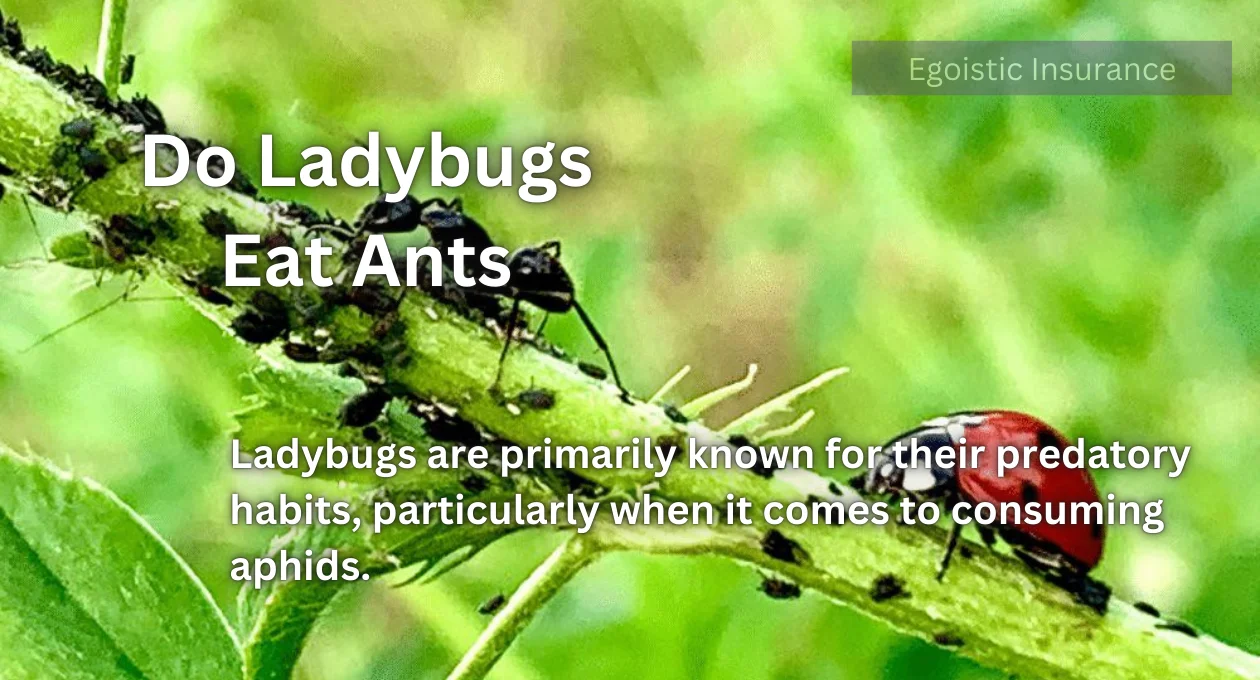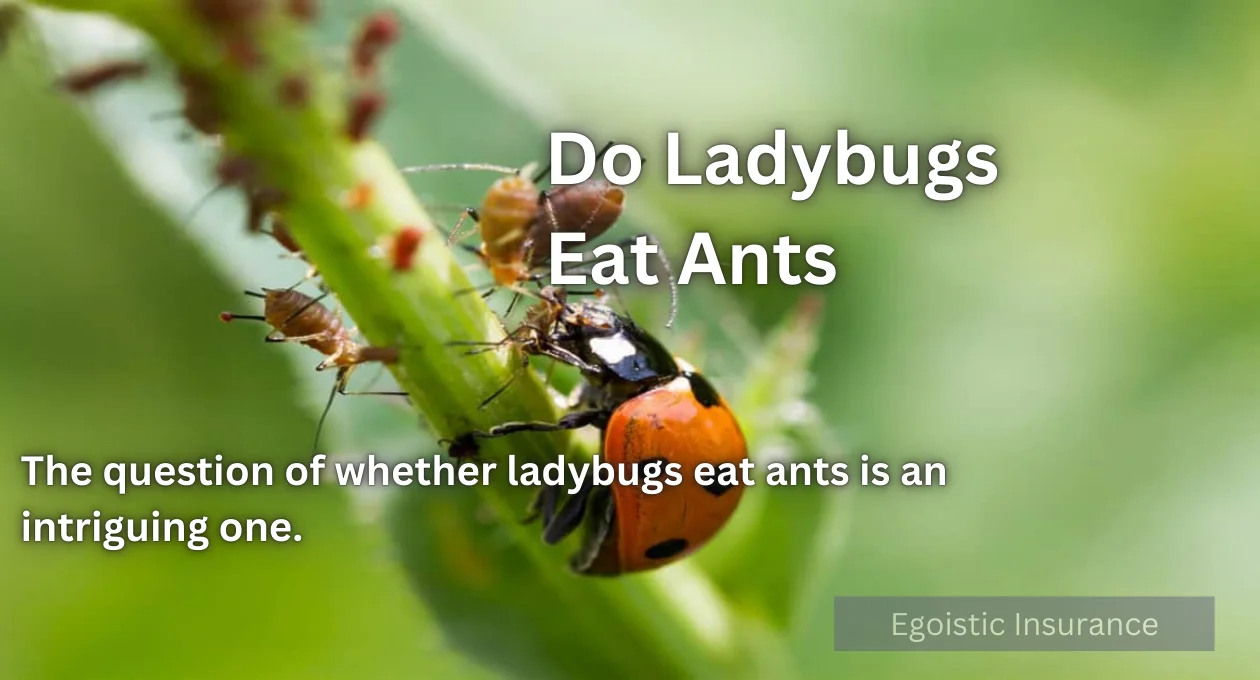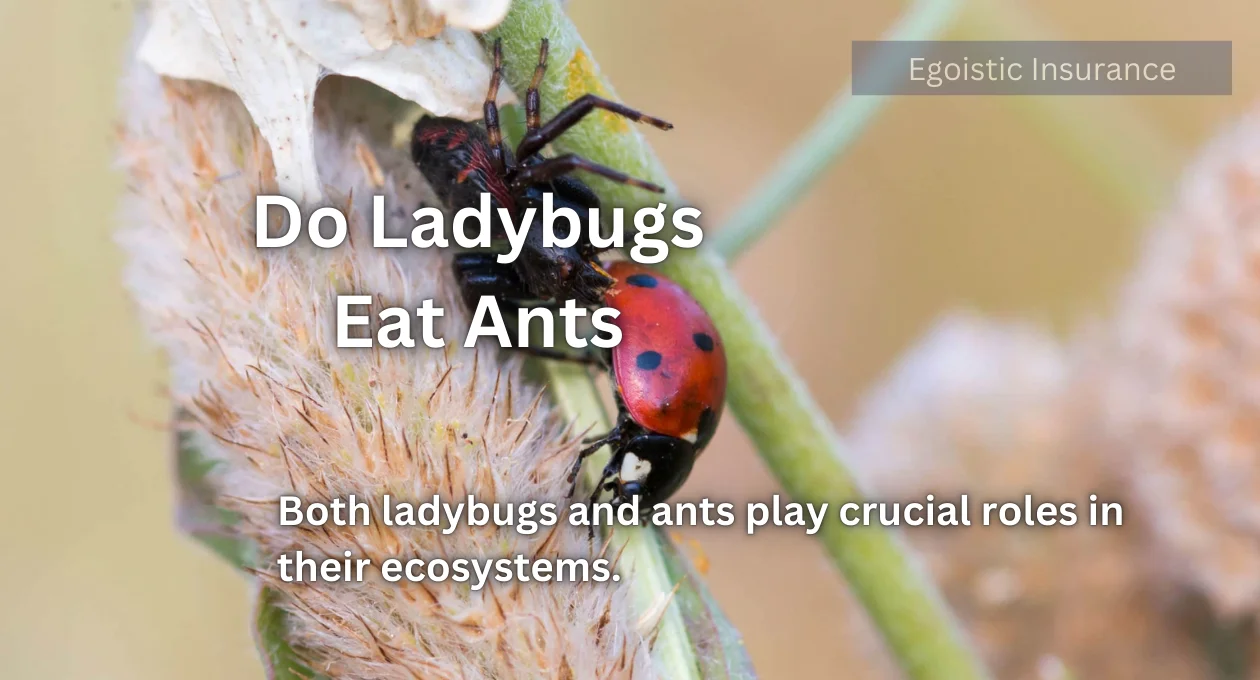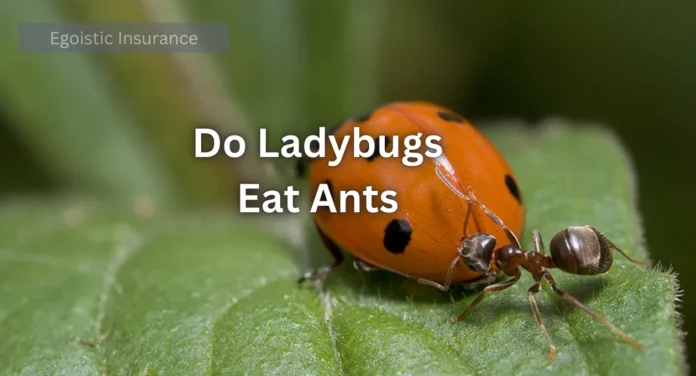Ladybugs, also known as ladybird beetles or lady beetles, are often celebrated for their charming appearance and their beneficial role in gardens and ecosystems. Their vibrant red and black polka-dotted shells make them easily recognizable, but what many people wonder is: do ladybugs eat ants? Let’s dive into the diet of these delightful insects and find out if ants are on the menu.
Ladybugs primarily feed on aphids, mites, and other soft-bodied insects, making them valuable allies in controlling pest populations. While they are not known to specifically seek out ants as a food source, certain interactions can occur. For instance, if ladybugs are in the vicinity while foraging for their preferred prey, they may encounter ants without directly feeding on them. Additionally, some species of ladybugs may be found near ant colonies, as ants often protect aphids from predators in exchange for the honeydew that aphids produce.
Interestingly, ants and ladybugs have a complex relationship that can sometimes be beneficial for both. Ants tend to farm aphids, ensuring a steady food supply, while ladybugs help regulate aphid numbers, maintaining a balance in the ecosystem. This coexistence highlights the interconnected nature of insect life in our gardens. Ultimately, while ladybugs do not typically consume ants, their presence in the same environment contributes to a healthier ecosystem overall.
Understanding Ladybug Diets

Ladybugs are primarily known for their predatory habits, particularly when it comes to consuming aphids. Aphids are small, sap-sucking insects that can wreak havoc on plants, making ladybugs valuable allies for gardeners and farmers. However, ladybugs have a diverse diet that goes beyond aphids.
In addition to aphids, ladybugs also consume scales, thrips, and small caterpillars, demonstrating their versatility as predators. This varied diet allows them to adapt to different environmental conditions and food availability, making them resilient in various habitats. By controlling pest populations, ladybugs play an essential role in promoting healthy plants and gardens, benefiting both the ecosystem and agricultural practices.
Another intriguing aspect of ladybug behavior is their ability to adapt their foraging strategies based on food scarcity. When aphid populations dwindle, ladybugs may shift their attention to other soft-bodied insects or even seek out the eggs of certain pests. This flexibility not only ensures their survival but also aids in maintaining balance within the ecosystem by preventing the overpopulation of any single pest species.
- Aphids and Other Small Insects: Ladybugs are voracious predators of aphids, which are often considered their main food source. They also feed on other small soft-bodied insects like scale insects, mealybugs, and whiteflies. Their larvae are equally effective at consuming these pests.
In addition to their dietary preferences, ladybugs are also influenced by environmental factors when it comes to their feeding habits. For example, temperature and humidity can affect the abundance of their prey, prompting ladybugs to adjust their locations in search of food. These insects are often found in areas where food sources are abundant, which can lead them to congregate in gardens and agricultural fields during peak aphid seasons. This adaptability not only aids in their survival but also plays a crucial role in maintaining the ecological balance by naturally regulating pest populations.
- Pollen and Nectar: In addition to their predatory diet, ladybugs may also feed on pollen and nectar. This behavior is particularly observed during times when prey is scarce. Feeding on pollen and nectar helps supplement their diet and provides them with necessary nutrients.
Ladybugs also play a vital role in pollination, albeit indirectly. As they move from plant to plant in search of food, they can inadvertently transfer pollen, aiding in the reproductive process of various flowering plants. This additional benefit highlights the multifunctional roles these insects have within ecosystems. Their contribution not only helps manage pest populations but also supports the overall health and productivity of gardens and agricultural landscapes.
Do Ladybugs Eat Ants?

The question of whether ladybugs eat ants is an intriguing one. To clarify, ladybugs do not typically prey on ants. Ants and ladybugs have different ecological roles and dietary preferences In the intricate web of garden ecosystems, ladybugs serve as a critical natural pest control agent, helping to manage aphid populations that can devastate plants. Their presence not only reduces the need for chemical pesticides but also promotes a healthier environment for other beneficial insects. As ladybugs thrive in lush gardens, they contribute to the overall biodiversity, which can lead to more resilient plant growth and a flourishing ecosystem. Gardeners often welcome their arrival as a sign of a balanced environment.
Moreover, the relationship between ladybugs and ants exemplifies the complexity of nature’s interactions. While ants protect aphids for their honeydew, ladybugs keep the aphid numbers in check, ensuring that neither species overwhelms the other. This mutual dependence demonstrates how various insects coexist and support one another within their habitats. Understanding these interactions enhances our appreciation for the roles each insect plays in sustaining a thriving garden. Here’s why:
Diet and Feeding Preferences: Ladybugs are specialized predators with a preference for soft-bodied insects. Ants, on the other hand, have a more robust exoskeleton, which makes them less appealing to ladybugs. Ladybugs are more likely to feed on insects that are easier to subdue and consume, which is why they target aphids and similar pests.
While ladybugs are not known to eat ants, their interactions in gardens can create interesting dynamics. Ants can protect aphids from ladybug predation, allowing aphid populations to thrive, which in turn benefits ladybugs when food is abundant. This mutualistic relationship exemplifies the delicate balance present in ecosystems. Understanding these interactions aids in fostering a healthier environment for both ladybugs and the plants they help protect.
Ants as Predators:
Ants are also predatory insects, and they often have their own set of prey. They are known to hunt insects and even scavenge dead organisms. Ants can sometimes attack ladybugs, especially if they feel threatened or if the ladybug is in a vulnerable state.
Understanding the interactions between ladybugs and other insects requires a broader view of their habitat and behaviour. Ladybugs not only serve as beneficial predators, but they also interact with various species in complex ways that influence ecosystem dynamics. For instance, their presence can attract other predatory insects, which may compete for similar food sources. This intricate web of interactions underscores the importance of ladybugs as a keystone species, vital for maintaining the health and stability of their environments.
Ecosystem Roles:

Both ladybugs and ants play crucial roles in their ecosystems. Ladybugs help control aphid populations, which benefits plants and crops, while ants contribute to soil aeration and the decomposition of organic matter. Their interactions are generally more about competition or coexistence rather than direct predation.
In addition to their roles in pest control and pollination, ladybugs also contribute to the overall health of ecosystems through their interactions with plants. By regulating aphid populations, they help reduce the stress on plants, allowing for better growth and fruit production. Moreover, ladybugs are often indicators of a balanced ecosystem, as their presence signifies a thriving environment with sufficient food sources. This connection between ladybugs and plant health underscores the intricate relationships that exist within ecosystems, highlighting the importance of preserving these beneficial insects.
FAQs
1. What attracts ladybugs to my garden?
Ladybugs are primarily attracted to gardens with abundant aphid populations, as these insects serve as their main food source. Additionally, the presence of flowering plants can entice ladybugs, as they also benefit from feeding on pollen and nectar.
2. How can I encourage ladybugs to stay in my garden?
To create a welcoming environment for ladybugs, plant a variety of flowering plants that bloom at different times throughout the year. Avoid using pesticides, as these can harm ladybugs and other beneficial insects. Providing shelter, such as small plant cover or insect hotels, can also help keep ladybugs in your garden.
3. Are ladybugs harmful to plants?
No, ladybugs are not harmful to plants. In fact, they are beneficial as they help control pest populations, particularly aphids, which can be detrimental to plant health when they thrive unchecked.
4. Do ladybugs hibernate?
Yes, ladybugs do hibernate. During colder months, they seek shelter in protected areas, such as under tree bark, in leaf litter, or inside homes, where they can remain dormant until warmer weather returns.
5. How can I tell if a ladybug is healthy?
Healthy ladybugs are typically vibrant in color and have no visible signs of disease or infestation. Observing them moving actively and feeding on aphids or other pests is also a good indicator of their health.
Conclusion
In summary, ladybugs do not eat ants. Their diet primarily consists of small, soft-bodied insects such as aphids, and occasionally they may consume pollen and nectar. Ants and ladybugs inhabit the same environments but fulfill different ecological roles. Understanding the dietary habits of ladybugs helps highlight their importance in controlling garden pests and maintaining healthy ecosystems.
Ladybugs are not only beneficial for gardens and crops but also serve as fascinating subjects for observation. Their bright colours and unique patterns can vary significantly among species, contributing to their appeal in nature. These insects often exhibit interesting behaviours, such as clustering together during colder months, which helps them conserve heat. By fostering environments that attract ladybugs, gardeners can enhance the natural pest control mechanisms in their spaces, promoting healthier plants and vibrant ecosystems. So next time you spot a ladybug in your garden, you can appreciate its role as a friend to your plants, rather than worry about it feasting on ants. The world of insects is full of fascinating relationships and interactions, and ladybugs are a prime example of nature’s balance in action.
For more interesting information keep visiting egoisticinsurance.online


